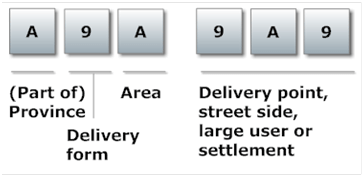The use of ZIP codes and postal codes ensure prompt mail and package delivery anywhere in the world. But did you know that the word ZIP is an acronym for something? Do ZIP codes and postal codes mean the same thing wherever you are sending something via mail?
Summary Table
| ZIP Code | Postal Code |
| Term commonly used in the US and Philippines | Term commonly used in Canada and other English-speaking countries |
| Composed of 5 digits | Can be alphanumeric depending on the country |
Definitions

The term ZIP code refers to a set of numeric codes developed by the United States Postal Service (USPS) with the primary function of identifying a location and accurately routing mail to a recipient. It is a system of postal codes which forms part of any US address since its inception in 1943. ZIP stands for Zone Improvement Plan, which the USPS coined to reflect efficient mail delivery to a recipient when the ZIP code is indicated in the mail or letter.
The basic format of a ZIP code is comprised of five numbers. In 1983, an extended format called ZIP+4 was introduced. The new format was made up of the five digits of the ZIP, a hyphen, and four more digits which correspond to a more precise location within an existing ZIP code.
The use of ZIP codes started in 1943 with the introduction of postal districts or zone numbers for larger cities by the United States Post Office Department. In 1963, a more systematic method was needed, giving rise to the use of five-digit zip codes all over the country. Three months later, the Department of the Post Office released a document containing a list of ZIP codes along with the official list of two-letter state abbreviations.
In 1944, Robert Moon, a post office worker, submitted a proposal that earned him the title “father of the ZIP Code.” The post office credits Moon for coming up with the idea of designating the first three digits of the ZIP code to an area’s sectional center facility. A sectional center facility sorts and distributes mail to local post offices within its jurisdiction. There are four types of ZIP codes in the US. Government agencies, universities, and other organizations that receive exceptionally high volumes of mail use what are called Unique ZIP codes. Post Office Box only ZIP codes are assigned to PO Boxes at specific facilities. Military ZIP codes are used on mail intended for the US Military. Everything else is called Standard ZIP codes.

A postal code is a combination of numbers and/or letters that form a postal address which facilitates efficient mail sorting and delivery. The term “postal code” is known in many English-speaking countries as a “postcode,” “Eircode,” “zip code,” and “pin code.” While geographical areas have designated postal codes, special codes are usually assigned to addresses of organizations or institutions (e.g. government offices, large corporations) that receive an exceedingly high volume of mail. An example of such system is the French CEDEX, which means “special business mail.”
Some countries have a specific synonym for postal code. In Canada, it is called “postal code.” The solid compound word “postcode” is commonly used in the Netherlands and many English-speaking countries. The standard word for post code in Ireland is “eircode.” In India, they call it a “PIN code,” where PIN means Postal Index Number. Germans and Austrians use the term Postleitzahl, or postal routing number. In countries such as the Philippines and the US, the term “ZIP code” is used.
ZIP Code vs Postal Code
So, what’s the difference between a ZIP code and a postal code? Aside from the fact that the Americans typically use the word ZIP code where other countries call it a postal code, postcode, or eircode; these terms both refer to a reference number that aids in the systematic, accurate, and quick delivery of mail. In addition, ZIP codes use only numbers, while postal codes can be alphanumeric depending on the country.





